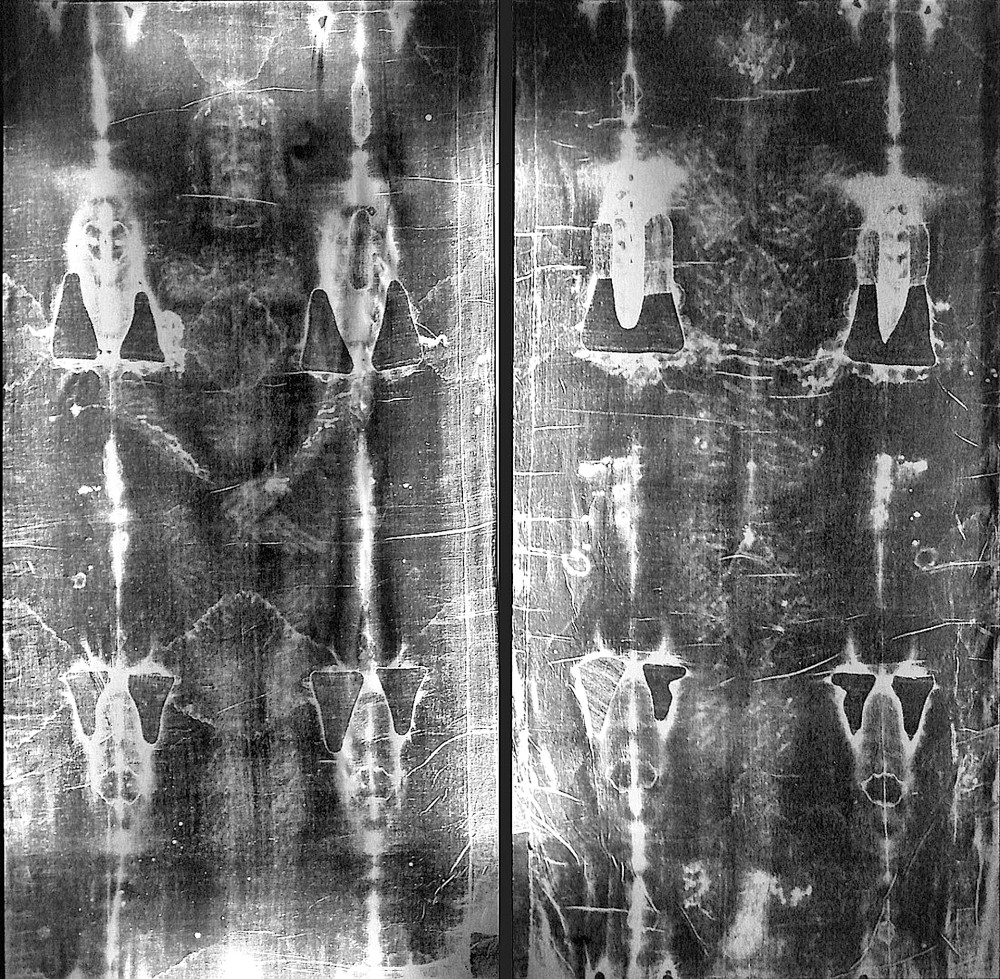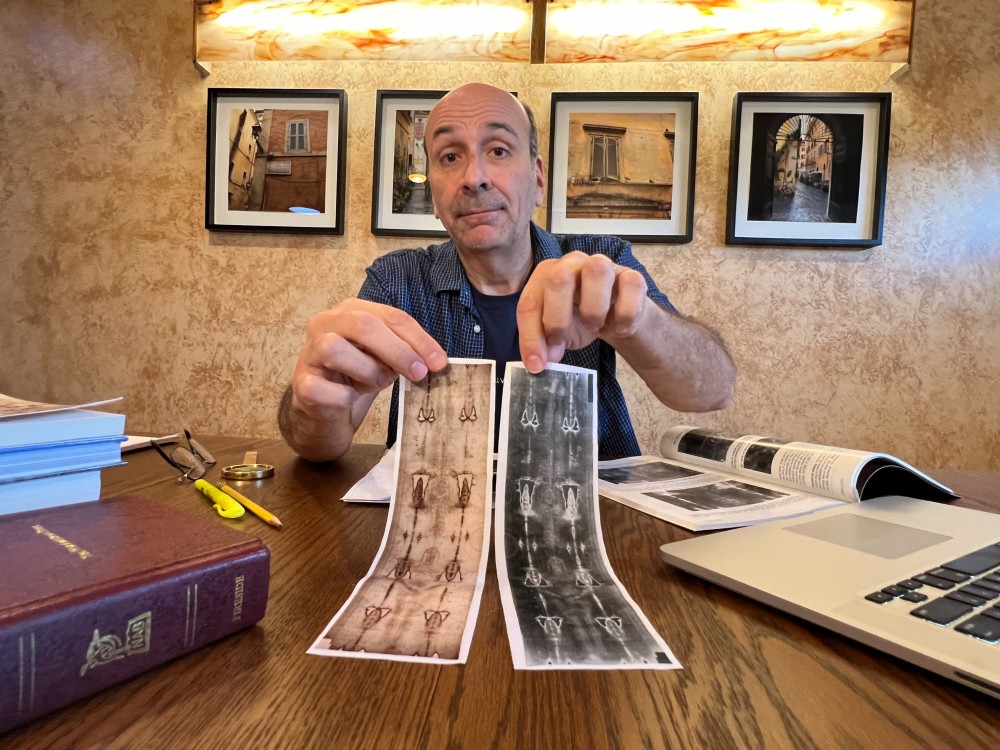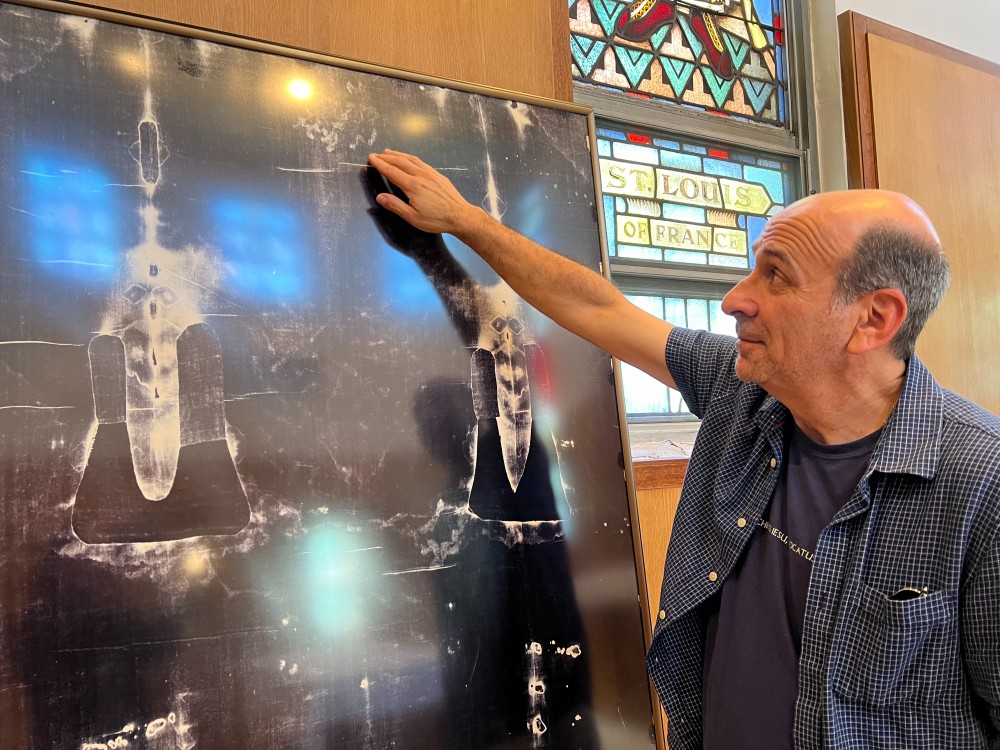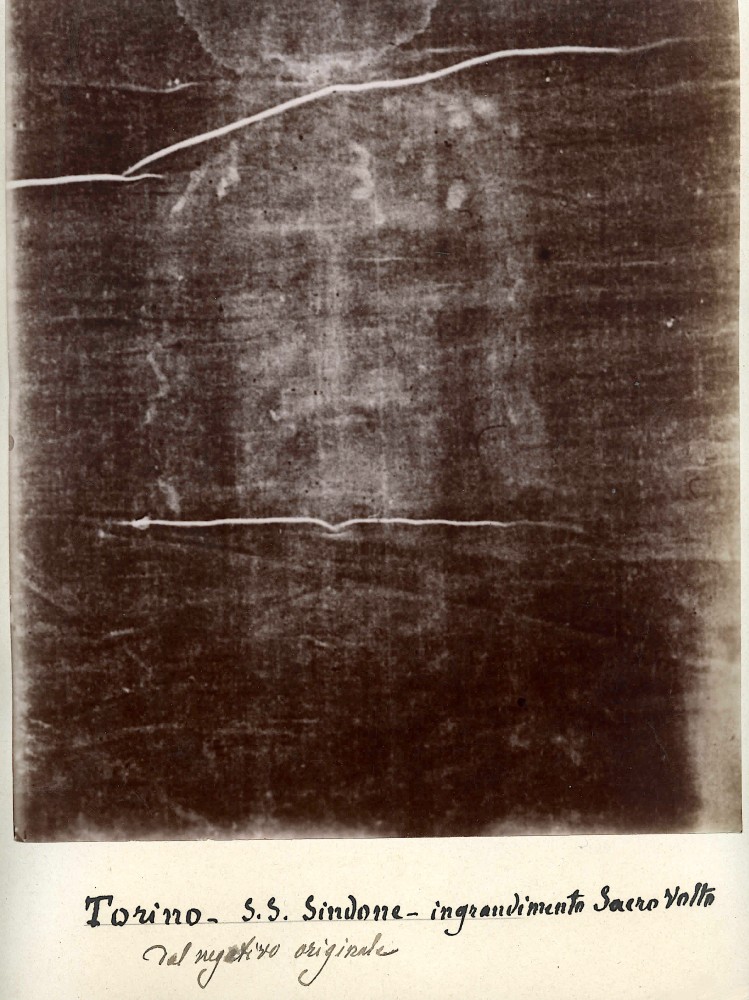
HICKSVILLE — Bill Lauto, a Long Island-based environmental scientist, wants the world to rethink enduring beliefs that the Shroud of Turin is a fraud concocted by medieval hoaxers.
And now, a team of Italian researchers who conducted dating work on a sample of the Shroud of Turin, the linen cloth believed by some to have been Jesus Christ’s burial shroud, have confirmed the relic can be traced back almost 2,000 years.
Their findings challenge previous research and a long-standing consensus that the Shroud is a medieval artifact and a forgery after the University of Oxford, in 1988, released radiocarbon dating test results that concluded this linen cover originated in 13th-century Europe.
This purported burial cloth of Jesus Christ has been stored for centuries at the Chapel of the Holy Shroud in Turin, Italy. In a study published in the journal Heritage, the authors didn’t address whether the shroud was in fact the one in which Jesus was buried, but did find that its age is roughly consistent with the time during which he lived.
The Shroud was denounced as a forgery by the bishop of Troyes, Pierre d’Arcis, in 1389, who allegedly identified the artist responsible for it. However, the debate about its authenticity has persisted.
Lauto, who is Brooklyn-born and semi-retired in Hicksville, where he is active with his parish, Our Lady of Mercy, told The Tablet that new technology proves the shroud bears a one-of-a-kind image formed by a sudden and powerful burst of light, much like a “negative” projected from camera film. The technology to do that, he noted, did not exist in the Middle Ages.

“This burst of energy put the image on the cloth, and the body passed through it,” said Lauto, who still works as an environmental consultant when not promoting the shroud’s authenticity. “It’s a theory in physics, but it matches up with what the Gospels say and everything else that we see on the shroud.”
Modern testing of its fibers detected grains of pollen that existed in the 1st-century Holy Land, not medieval Europe, Lauto said.
The study’s lead researcher Liberato De Caro, from the Institute of Crystallography in Italy, and colleagues used a method for dating ancient linen threads by inspecting their structural degradations in a small sample from the Shroud.
The results of the analysis, the researchers found, were “fully compatible” with measurements obtained from a linen sample whose dating, according to historical records, is A.D. 55-74 — consistent with the hypothesis that the Shroud is a 2,000-year-old relic.
According to Lauto, the shroud’s life-sized image shows the impression of a man with a punch-swollen face and scourge wounds all over his body. A puncture to his wrist is consistent with what is now known about crucifixion practices — not the pierced palms popular in European art.

Lauto said belief in the shroud’s authenticity builds the faith by confirming the Gospels.
“Everything I’m telling you is from modern medical forensics,” he explained. “The only theory left is summed up in one word — Resurrection.”
Lauto bolstered his credentials with a postgraduate certification in “Shroud Studies” from the Science and Faith Institute of the Pontifical Athenaeum Regina Apostolorum — a pontifical university in Rome.
Now serves on the Shroud Apostolate Group English (SAGE) for North America. Last month, Lauto and his team exhibited a replica of the shroud and held lectures on the subject at the National Eucharistic Congress in Indianapolis.
Lauto, however, has been on the case since his youth. His family belonged to St. Francis Xavier Parish in Park Slope, and he attended grade school at the parish’s now-closed Catholic academy.
Later, his family moved to Greenlawn on Long Island, where he attended junior high in a public school. He loved science and thought he’d study it in college.
“I started hearing my teachers saying, ‘Oh, scientists don’t believe in God,’ ” Lauto recalled. “So, I started to look up all the different faiths and philosophies. And that was not to the enjoyment of my mother. She was worried I was going to change my religion.”
But one day, as Lauto searched the Encyclopedia Britannica for information about Jesus, he saw the first successful photo of the Shroud of Turin — a black-and-white image taken in 1898 by the Italian lawyer Secondo Pia.
“And the hair stood up on the back of my neck,” Lauto said. “I became acutely aware of the fact that I was insignificant in this universe. And I said, ‘How am I looking at a photograph of the face of Jesus Christ?’
“That put me on the path of researching anything and everything I could get on the Shroud of Turin.”
Since then, he has carried a small copy of Pia’s photo in his wallet. He brings it out each time someone challenges him about the shroud. Sometimes, it’s a tough sell, considering Oxford’s findings in 1988.

Still, this famed university in England has altered its position on the shroud.
In 2008, Oxford physicist Christopher Ramsey wrote that there was “no direct evidence” to suggest the radiocarbon dates were inaccurate. However, he added, other evidence suggested “that the shroud is older than the radiocarbon dates allow.”
“Further research is certainly needed,” Ramsey concluded.
Lauto is happy to share what he believes.
He described how researchers, like a hiker following a reverse azimuth on a compass, use modern technology to follow evidence from the shroud back to the day Jesus died on the cross.
“We are pretty sure that that day was April 3rd, 33 A.D.,” Lauto said. “It’s the only day that meets all the criteria.”
He said researchers reached that date by referring to scripture to know when Pontius Pilate was in power on a Friday with two Jewish holidays — the feasts of Passover and Unleavened Bread. Also, according to the Gospel, the ground shook, the sun was blocked out in the afternoon, and there was a lunar eclipse — the so-called blood moon — at night.
Lauto said scientists, 75 years ago, declared there was no lunar eclipse on that date. But, he added, “NASA did corrections for a change in Earth’s orbit.”
Thus, researchers now believe a lunar eclipse did happen then, according to Lauto.
“At the Dead Sea, we’ve kept the core samples to show there was an earthquake in the year 33 A.D.,” Lauto said.
He added his belief that the quake triggered a massive dust storm that blotted the sun.
All these pieces of the story attest to the shroud’s authenticity, Lauto said.
“Because on the shroud, we have the pollen, the same pollen from the springtime, and we have dust particles from the dust storm,” he said. “So, it all starts to fall into place with all the stories from the Gospels.
“And it’s connecting to the Shroud of Turin.”

What an uplifting moment of FAITH. However, our faith is fully supported by science, and to that end we not only believe what we do not always understand, but we now have it reaffirmed for us scientifically. What more could we want!!